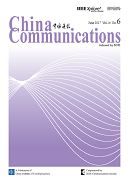NETWORKS & SECURITY
Zhaofeng Ma
2017, 14(6): 156-167.
with rapid achievement of current information technology and computing ability and applications, much more digital content such as films, cartoons, design drawings, office documents and software source codes are produced in daily work, however to protect the content being copying, shared or deliberately stolen by inside or outside, digital rights management (DRM) became more and more important for digital content protection. In this paper, we studied various DRM model, technology and application, and first proposed DRM Security Infrastructure (DSI), in which we defined encryption, hash, signature algorithm, watermarking algorithms, authentication, usage control, trusted counter, conditional trace, secure payment, and based on the DSI we then proposed a whole classification approach and architecture of all kinds of DRMs, in which we proposed 6 typical classes of copyrights and content protection DRMs architecture: (1) Software-oriented DRM,(2) eBook-oriented DRM, (3) Video-oriented DRM, (4)Image-Oriented DRM (5) Unstructured data oriented DRM, (6) Text-oriented DRM. Based on the above DSI, we then proposed a dynamic DRM model selection method for various DRM application, which can be adapted dynamically for different technology of different applications, which can provide a whole solution for variant DRM development in a rapid and customized mode. The proposed DRM method, technology and application in this paper provided a common, flexible and extendable solution for variant DRM scenes, and can support rapid and customized development. Moreover, we proposed an opinion that the future life will enter into a new era that the content usage and consumption will not again adopt DRM technology rather than with law, liberty and morality.
